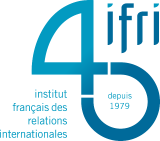The Vegetation Programme Actuelles de l'Ifri, The Europe & Space Series, No. 13, November 2013
Under human pressure, many changes are taking place in the resources and the environment of Earth. An increasing global population fuels the need for food, natural resources and land. Consequently, the need for maintaining a capacity to observe and understand the Earth system and the biophysical processes has become a key element for the sustainable management of the planet’s natural resources. The SPOT-Vegetation instruments have significantly contributed to reach this goal.

In 1977, France proposed to develop a series of Earth observation satellites aimed at taking images of the Earth in different light bands: SPOT. These high-resolution satellites were designed to improve the knowledge and the management of Earth’s resources by gathering data regarding agriculture, water resources, renewable and non-renewable fuels and contribute to a better understanding of the oceans, climate and erosion.
Initially, Spot was suggested by France in February 1977 as a European project but was supported only by two countries, Belgium and Sweden. Consequently, the French government decided to adopt Spot as a national project and offered Belgium and Sweden to join on a bilateral basis (contributing 4% each). In order to market the images Spot could take from every spot of the Earth, CNES set up the first satellite-based Earth resources company, “SPOT Image”, based in Toulouse. CNES was a 39% shareholder along with other sponsors from Belgium, Sweden and Italy.
Spot-1 was launched with Ariane 2 in February 1986. This first satellite was joined by Spot-2 in January 1990 followed by Spot-3 in September 1993. In 1998, Spot-4 was launched with Ariane 4 when Spot-3 went out of action. This new satellite contained major technical developments and carried additional experiments for the observing of the ozone layer and radio-positioning. CNES managed to convince the European Union (EU) of the necessity of making available in Europe a global monitoring instrument devoted to the vegetation cover. Jointly developed by France, the EU, Belgium, Italy and Sweden, this new instrument dedicated to the daily measurement of the Earth vegetation cover was Spot-4’s main improvement. This instrument was regarded as a workhorse of global monitoring: “It gives a basic dataset you can trust, really designed around dedicated measurements, oriented to understanding the state of the vegetation cover of the world on a day in-day out basis”.
Download the paper to read full text:


